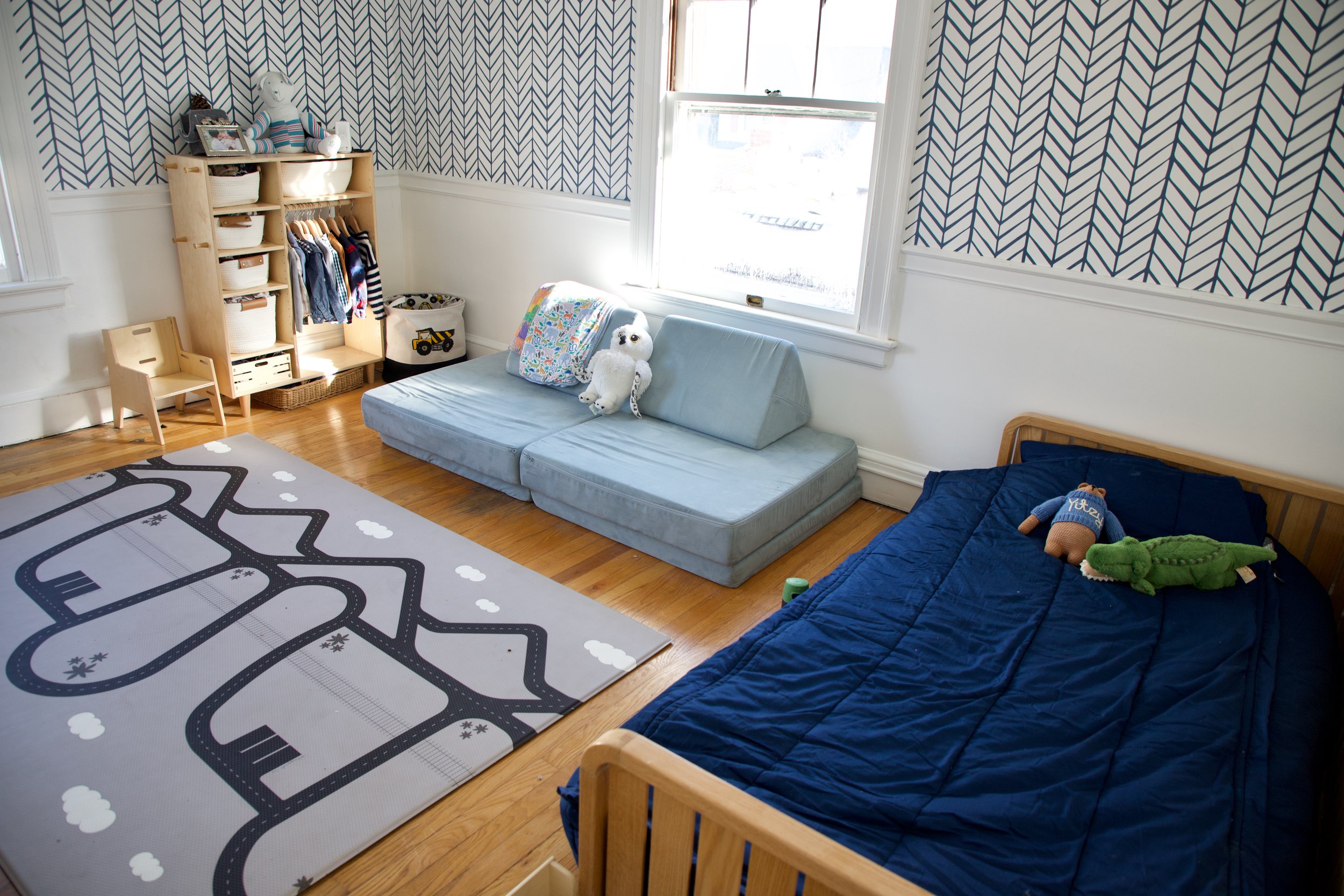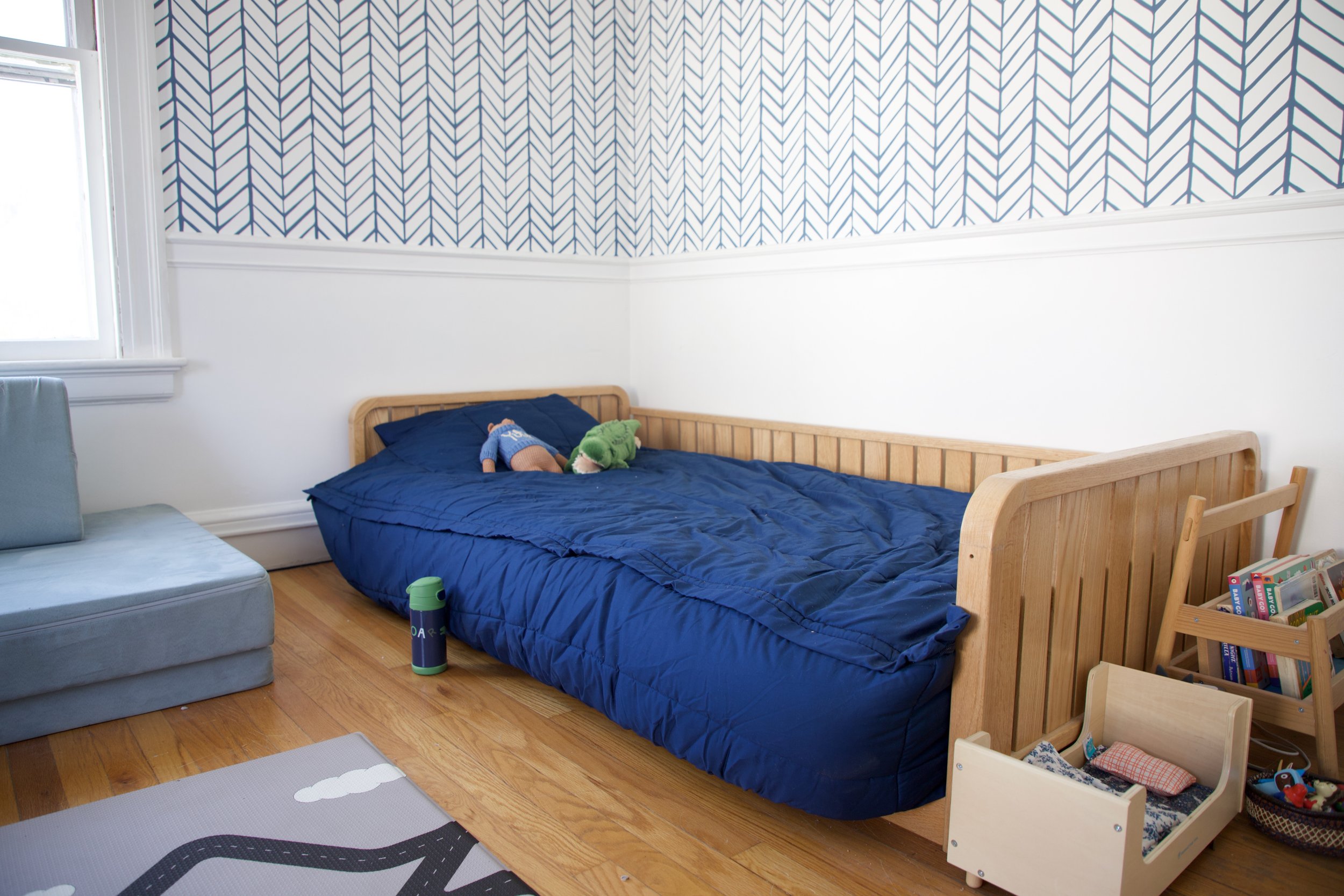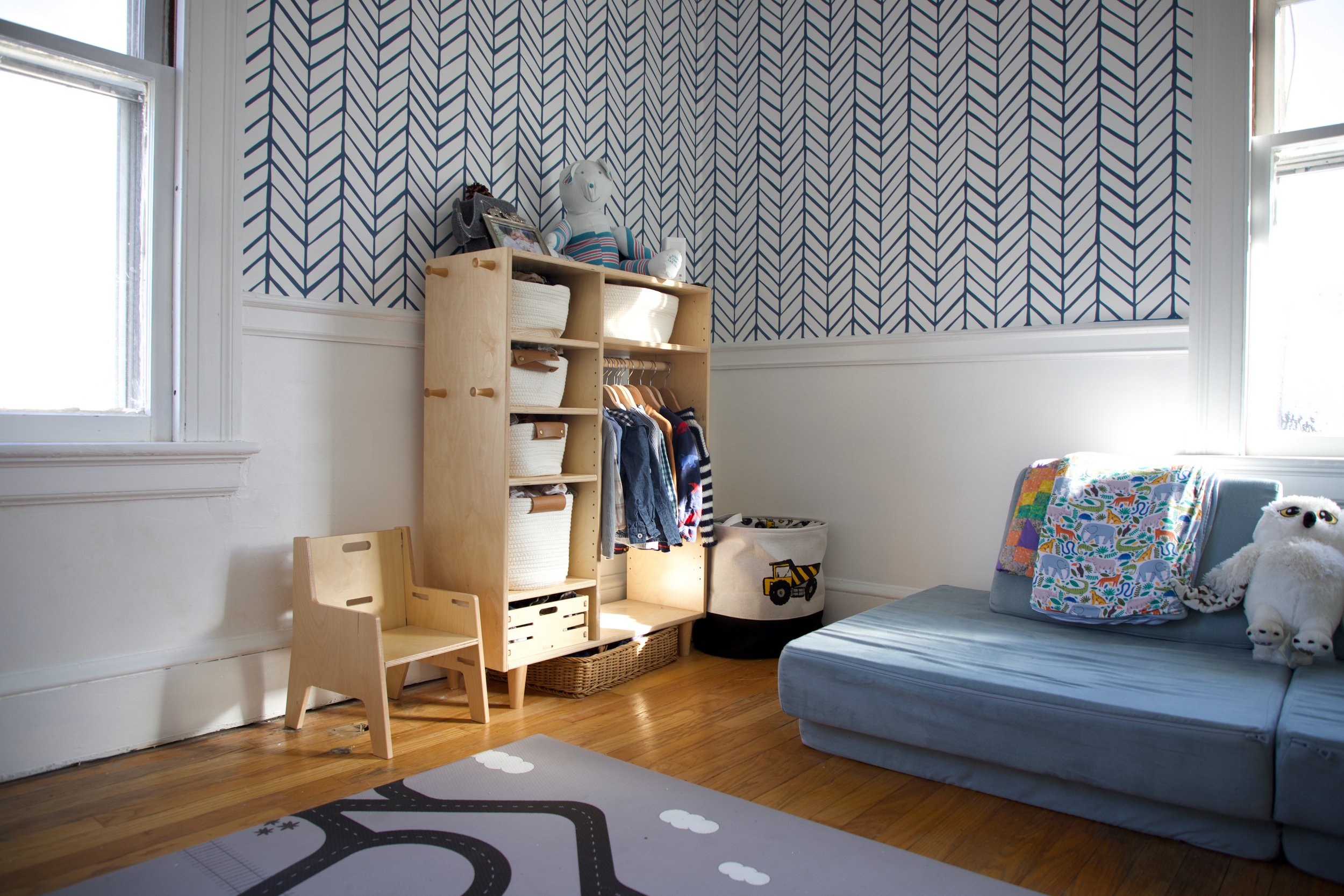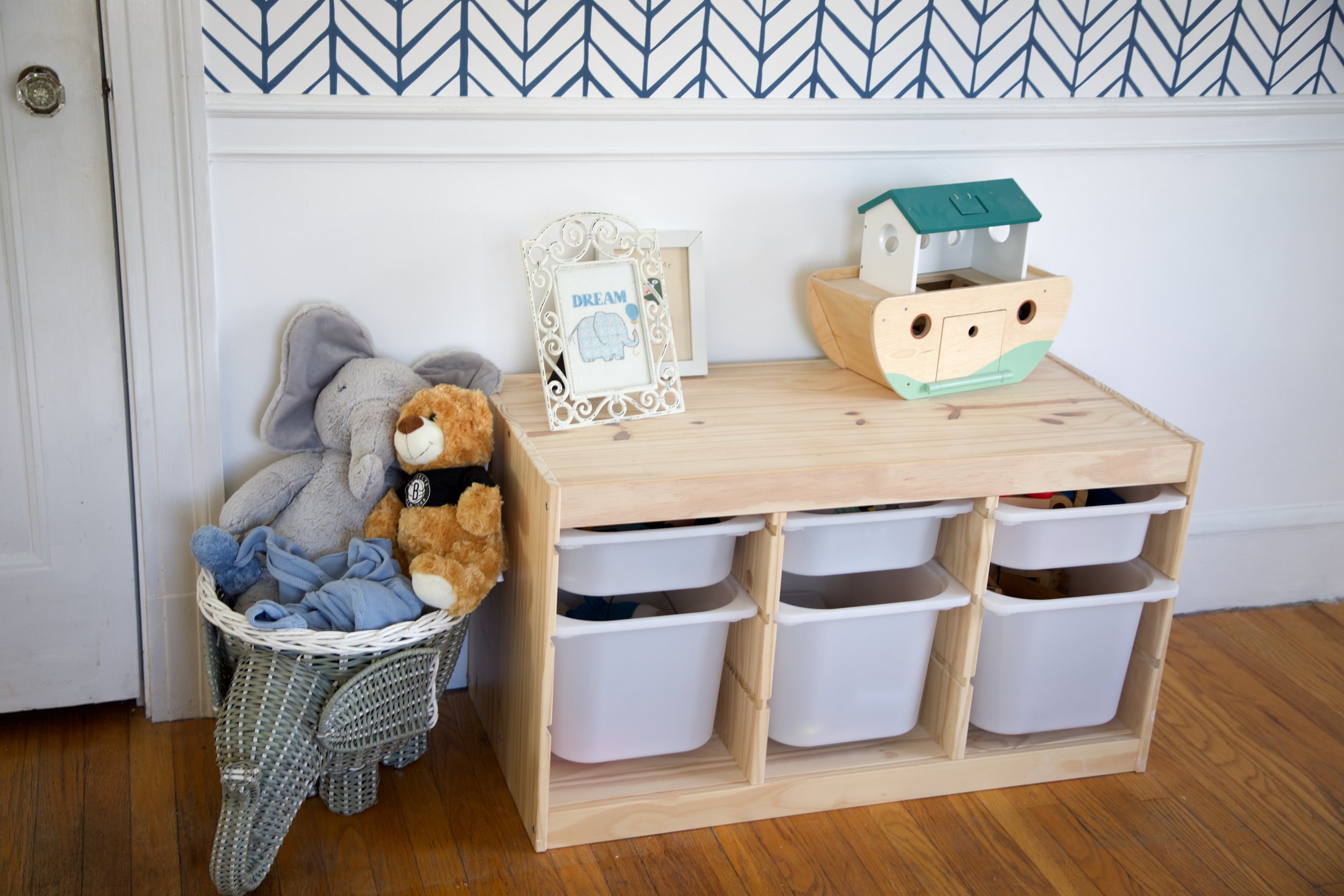Montessori Toddler Bedroom Tour
This post may contain affiliate links, which means I may earn a small commission if you buy through my link but does not change your price.
Are you interested in designing a Montessori bedroom for your toddler? This post gives a tour of my son’s Montessori toddler bedroom and offers a guide on what to consider when creating a Montessori bedroom for your child!
When we moved to our new house this summer I was so excited to design a new Montessori bedroom for my 2.5 year old. In our old apartment his room was shared with his baby sister’s stuff (though not with her, she slept in our room) and housed pretty much all his toys since our living room was tiny. This time I got to design a bedroom that fits my 2-year-old’s needs but can also grow with him. Here is a look at his toddler Montessori bedroom and considerations in creating a Montessori bedroom space for a toddler!
The first thing you likely notice walking into a Montessori toddler bedroom is a floor bed. The floor bed is a classic aspect of the Montessori toddler bedroom. It is simply a bed close to the floor that is safe for babies and young toddlers. Ours is the Sprout Kids Sosta (code OnTheWay10). While you could put a mattress directly on the floor, there are several benefits to using a floor bed. The first is airflow. Mattresses are not meant to be placed directly on the floor and should be aired out regularly if they are. The second is entrapment. If a bed for a toddler is going to be against a wall that side should be designed to be against the wall, like the sides of our floor bed are. A plain mattress should be at least 1 foot away from the wall (some experts say 2 feet) to avoid entrapment risk.
Floor beds are chosen instead of cribs to give children more autonomy. It allows a baby or toddler more control over when they get up and go to sleep. Of course, every Montessori family handles what that means a bit differently. Personally, we love it as a way to lie with my son as he goes to sleep. It also has allowed us to respond to him more easily in the middle of the night. He has had a floor bed since he was 5 months old but did not sleep in his own room at night until after a year. He had a crib-sized floor bed until a year and then we switched to this.
Though floor beds have become part of the Montessori “aesthetic” they’re not necessarily crucial if designing a room for a 2.5 year-old-toddler. I find they are incredibly useful for babies and young toddlers. For an older toddler, a bed off the floor is fine too! If my toddler was already 1.5 I am not sure if I would purchase a floor bed or choose a bed off the floor. I do love that our bed allows legs to be added and we likely will eventually add them (though Sprout also came out with a bunk bed extension so we might end up getting that eventually instead).
We, however, loved having a floor bed from infancy. As mentioned, it allowed us to respond better to his needs and he seemed to prefer it to the crib we had in the very early months. If you are choosing to use a floor bed with your baby or toddler it is crucial you completely babyproof the room. Small parts should be removed. All furniture should be anchored to the wall (this is necessary anyway), and cords should be covered. We have also liked having a full-room baby monitor that allows us to see the entire room, not just the bed.
If you are looking into floor beds I have a blog post on my favorite floor beds. We have had both the Sosta and the basic Sprout floor bed. The Sosta also has an option for 3/4 bars on the front if your little one is rolling off.
On his bed, we have Beddy’s for his sheets and blanket (code AYELET for a discount). We love Beddy’s because it allows him to easily make his bed on his own. All he has to do is zip up the sides. I feel this is the perfect addition to a Montessori bedroom! Our mattress is the Avocado children’s mattress and we have been incredibly happy with it.
At the foot of his bed, he has his Toniebox, a doll bed, and a small bookshelf (from IKEA). The Toniebox has allowed him to play music when he wishes since he turned 1.
On the other side of the room we have a dressing area for my toddler. Between the dressing area and the bed is our Nugget couch. We like the accessibility of the low couch for babies. My baby has one in her room as well and she can crawl up them on her own which she wouldn’t be able to do with a larger couch. We, however, have not gotten amazing use out of building with it (yet, anyway!).
Our dressing area consists of my toddler’s accessible wardrobe, a laundry hamper, and a chair for putting on clothes if he wishes. An accessible wardrobe is a perfect addition to a Montessori bedroom because it allows your toddler to choose clothes themselves and also put away clothes on their own. This wardrobe does have all our in-season clothing. When we first started using the accessible wardrobe we only put in a small number of pieces, but now that he is older he can handle all the options. I try to limit my purchases so all the clothes fit in! I love that this limits what I am purchasing.
The hanging area has all of his in-season shirts and sweaters hung on child-sized hangers. The basket below has his pants. The tray on the side has a divider in the middle and has underwear and socks. Above the tray is a large basket with pajamas. The other baskets have a couple of out-of-season outfits in case we have an uncharacteristically warm day (or a cool one in summer), clothes that he has not quite grown into yet, and training pants that we no longer use.
To either side is the hamper and the chair he uses to put on clothes. The goal is to make it accessible for him to do all the aspects of dressing and putting clothes away as he wishes. There are also pegs on the side of the wardrobe where we will often hang sweaters or his extra towel.
On the other wall of the room we have an IKEA toy storage bin. In this bin he has his cars and trains. The mat in the middle of the room has his car track which he can use with the cars in this bin. This is not a classic Montessori way of presenting toys (Montessori presents materials on an open shelf) but it works for us for open-ended toys in the bedroom. It makes for easy cleanup.
Having a larger living room as well as a playroom has allowed us to limit the toys in my son’s Montessori bedroom more. There is debate about how many toys should be in a bedroom. Personally, we like having a small number that allows my son to play when he wakes up if he wishes. Sometimes he will wake up and play independently for a bit before coming out. We have never had an issue with him playing in the middle of the night, though it wouldn’t really bother me if he did do that occasionally. In our old apartment, as I mentioned, most of our toys were in his bedroom. Ideally, as with any space in Montessori, you want the toys to be kept organized and somewhat minimal, but if you don’t have a playroom and all the toys need to be in the bedroom, do not let the images of Montessori bedrooms devoid of toys discourage you.
Of course with young toddlers, you need to be especially careful about the toys that are in the bedroom from a safety perspective. If my daughter was sharing the room many of the cars would be removed. When we eventually have two children sharing this room any smaller cars will go away in the closet and be accessible only to my toddler.
Next to the toy bin we have a basket with his stuffed animals.
Overall, designing a Montessori bedroom you want to think about how to make the room accessible and fitting for your child. It doesn’t have to be boring! We plan to add some art as well. The art will be displayed on the lower white part of the wall. This puts it at my son’s level, allowing him to enjoy it. What makes a room Montessori is not the aesthetic but the accessibility.
There you go, that’s our Montessori toddler bedroom! The wallpaper is Serena and Lily. Do you have any other questions about our room?






